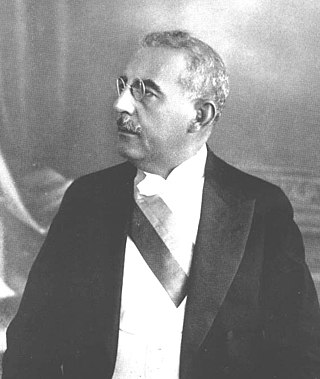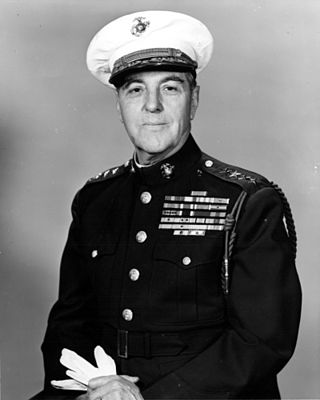The recorded history of Haiti began in 1492, when the European captain and explorer Christopher Columbus landed on a large island in the region of the western Atlantic Ocean that later came to be known as the Caribbean. The western portion of the island of Hispaniola, where Haiti is situated, was inhabited by the Taíno and Arawakan people, who called their island Ayiti. The island was promptly claimed for the Spanish Crown, where it was named La Isla Española, later Latinized to Hispaniola. By the early 17th century, the French had built a settlement on the west of Hispaniola and called it Saint-Domingue. Prior to the Seven Years' War (1756–1763), the economy of Saint-Domingue gradually expanded, with sugar and, later, coffee becoming important export crops. After the war which had disrupted maritime commerce, the colony underwent rapid expansion. In 1767, it exported indigo, cotton and 72 million pounds of raw sugar. By the end of the century, the colony encompassed a third of the entire Atlantic slave trade.

A labor camp or work camp is a detention facility where inmates are forced to engage in penal labor as a form of punishment. Labor camps have many common aspects with slavery and with prisons. Conditions at labor camps vary widely depending on the operators. Convention no. 105 of the United Nations International Labour Organization (ILO), adopted internationally on 27 June 1957, abolished camps of forced labor.

The United States occupation of Haiti began on July 28, 1915, when 330 U.S. Marines landed at Port-au-Prince, Haiti, after the National City Bank of New York convinced the President of the United States, Woodrow Wilson, to take control of Haiti's political and financial interests. The July 1915 invasion took place following years of socioeconomic instability within Haiti that culminated with the lynching of President of Haiti Vilbrun Guillaume Sam by a mob angered by his decision to order the executions of political prisoners. The invasion and subsequent occupation was promoted by growing American business interests in Haiti, especially the National City Bank of New York, which had withheld funds from Haiti and paid rebels to destabilize the nation through the Bank of the Republic of Haiti with an aim at inducing American intervention.

Sténio Joseph Vincent was President of Haiti from November 18, 1930 to May 15, 1941.
The Haitian Campaign Medal was a United States Navy military award which was first established on June 22, 1917, and again on December 6, 1921 for American soldiers participating in the United States occupation of Haiti.

Lemuel Cornick Shepherd Jr. was a General in the United States Marine Corps, 20th Commandant of the Marine Corps, Navy Cross recipient, veteran of World War I, World War II, and the Korean War.

Les Cayes, often referred to as Aux Cayes, is a commune and seaport in the Les Cayes Arrondissement, in the Sud department of Haiti, with a population of 71,236. Due to its isolation from the political turmoil of the capital, Port-au-Prince, it is one of Haiti's major ports, with export trade concentrating on mostly coffee and sugarcane. As the world's largest supplier of vetiver, it exports 250 tons annually of this ingredient of perfume and fragrance manufacturing. Minor exports include bananas and timber.

The first United States occupation of the Dominican Republic lasted from 1916 to 1924. It aimed to force the Dominicans to repay their large debts to European creditors, whose governments threatened military intervention. On May 13, 1916, Rear Admiral William B. Caperton forced the Dominican Republic's Secretary of War Desiderio Arias, who had seized power from President Juan Isidro Jimenes Pereyra, to leave Santo Domingo by threatening the city with naval bombardment. The Marines landed three days later and established effective control of the country within two months. Three major roads were built, largely for military purposes, connecting for the first time the capital with Santiago in the Cibao, Azua in the west, and San Pedro de Macorís in the east; and the system of forced labor used by the Americans in Haiti was absent in the Dominican Republic.

Haiti's Constitution and written laws meet most international human rights standards. In practice, many provisions are not respected. The government's human rights record is poor. Political killings, kidnapping, torture, and unlawful incarceration are common unofficial practices, especially during periods of coups or attempted coups.

Gerald Carthrae Thomas was a United States Marine Corps general who served as Assistant Commandant of the Marine Corps. He retired from the Marine Corps in 1956 with more than 38 years of distinguished service which included duty on four continents, spanning the two World Wars, Haiti, and the Korean War. During World War I, he fought in major offensives, including the Battle of Belleau Wood, and was awarded the Silver Star and the Purple Heart.

The Haiti Independence Debt involves an 1825 agreement between Haiti and France that included France demanding an indemnity of 150 million francs to be paid by Haiti in claims over property – including Haitian slaves – that was lost through the Haitian Revolution in return for diplomatic recognition, with the debt removing $21 billion from the Haitian economy. The first annual payment alone was six times Haiti's annual revenue. The payment was later reduced to 90 million francs in 1838, equivalent to $33,875,264,271 in 2023, with Haiti paying about 112 million francs in total. Over the 122 years between 1825 and 1947, the debt severely hampered Haitian economic development as payments of capital and interest totaled a significant share of Haitian GDP, constraining the use of domestic financial funds for infrastructure and public services.

The 1804 Haiti massacre, sometimes referred to as the Haitian genocide, was carried out by Afro-Haitian soldiers, mostly former slaves, under orders from Jean-Jacques Dessalines against much of the remaining European population in Haiti, which mainly included French people. The Haitian Revolution defeated the French army in November 1803 and the Haitian Declaration of Independence happened on 1 January 1804. From February 1804 until 22 April 1804, squads of soldiers moved from house to house throughout Haiti, torturing and killing entire families. Between 3,000 and 5,000 people were killed.
John Groff was a brigadier general in the United States Marine Corps whose military career spanned from 1912 to 1946. Groff was a highly decorated veteran of World War I, earning the Navy Cross, Distinguished Service Cross, Silver Star, and Purple Heart medals. He also participated in the Banana Wars, and World War II. At the time of his death in 1990 at age 100, BG Groff was the oldest surviving general officer in the Marine Corps.
The Haitian–American Convention was a treaty between those two nations, ratified by the United States Senate on 16 September 1915 which granted the United States the right to provide security in and administer the finances of Haiti for a period of 10 years.

The Gendarmerie of Haiti, also known as the Haitian Constabulary, was a gendarmerie raised by the United States during its occupation of Haiti in the early 20th century. Established in late 1915, the gendarmerie was operational from 1916 until 1928, during which time it was Haiti's only military force, earning a reputation for active interference in civilian government that may have set the stage for the future politicization of Haiti's armed forces.

Dr. Pierre François Joseph Benoit Rosalvo Bobo (1874–1929), known as Rosalvo Bobo, was a Haitian politician, and a leader of the rebel faction called the Cacos. In March of 1915, he started and led a rebellion against the government of President Vilbrun Guillaume Sam. As the rebellion was gaining momentum, Sam ordered the arrest and murder of his political opponents, but was himself killed by a mob in retaliation on 27 July 1915. This led to a breakdown of order and widespread violence in the capitol of Port-au-Prince. In response, U.S. Marines landed at Port-au-Prince on 28 July 1915, beginning the United States occupation of Haiti.

The participation of the United States in regime change in Latin America involved US-backed coup d'états which were aimed at replacing left-wing leaders with right-wing leaders, military juntas, or authoritarian regimes. Intervention of an economic and military variety was prevalent during the Cold War. Although originally in line with the Truman Doctrine of containment, United States involvement in regime change increased following the drafting of NSC 68, which advocated more aggressive actions against potential Soviet allies.
Démosthènes Pétrus Calixte was a Haitian conservative noirist politician and military figure who led the Garde d'Haïti. In 1937, Calixte became involved in political chaos, where officers within the Garde tried to overthrow president Sténio Vincent and replace him with Calixte. This led to the replacement of Calixte, who fled to the Dominican Republic. Upon his return in the 1940s, Calixte was made a presidential candidate by the Mouvement Ouvriers et Paysans in 1946. However, he lost the election to Dumarsais Estimé.
The Revolutionary Committee was a governmental council that governed Haiti from July 28 to August 11, 1915. The committee took power after the death of Vilbrun Guillaume Sam and de facto controlled the country's capital, Port-au-Prince, with its activities having as its background the American invasion of Haiti and the rebellion of Rosalvo Bobo. Committee was composed of: Charles de Delva, Charles Zamor, Edmond Polynice, Léon Nau, Ermane Robin, Eribert Saint-Vil Nöel and Samson Monpoint.














